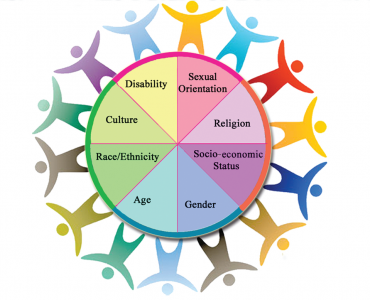Widgetized Section
Go to Admin » Appearance » Widgets » and move Gabfire Widget: Social into that MastheadOverlay zone
Cultural Diversity in the Community and the Workplace
The views expressed are those of the author and do not necessarily reflect the views of ASPA as an organization.

By Iberkis Faltas
December 14, 2018
Lately, it seems that the word “diversity” is oozing from everywhere — sometimes positively, and some others, negatively. Recent research has shown that in the United States, approximately 58 percent of the population believes that diversity makes the country a better place. The same study showed that only 9 percent of the population thinks that diversity makes the country a worse place to live.
An interesting fact to reflect on is that immigration in the United States started in or around the 1600s. With that in mind, one might think society should have gotten used to the knowledge that regardless of the skin color, spoken-language or the number of your family’s generations that have been living in U.S. soil the overall U.S. population is 98 percent a melting pot of immigrants from all over the world. Regardless of our family’s tree, at some point between the then and now, someone in our family emigrated from country X, entering the United States as immigrants. Judging diversity in the workplace is socially unacceptable.
Nevertheless, it is important to be aware cultural diversity does not only refer to the segregation of a particular ethnic group, but also the inclusion and fraternization of individuals bound by a common characteristic, such as disability, religion, socio-economic status,gender, beliefs and sexual orientation, to name a few. The conceptualization of diversity helps policymakers, CEOs, managers and leaders to drive balance and equality in the workplace. Diversity helps individuals to grow professionally, organizations to grow globally, while expanding on efficiency and productivity. Scholars have agreed that diversity is social and professional inclusiveness and that inclusiveness allows us to use a person’s unique strengths to promote communication, create cross-functional teams, increase internal and external collaboration, the expansion of customer service approaches and to create an organizational culture that will value and appreciate the importance of diversity and multiculturalism.
Harvard University Psychologist and Educator Howard Earl Gardner explained that individuals’ cognitive practices are influenced, in form and force, by culture, which represents professional wisdom. Within the professional contextualization of cultural cognitive practices are the attained skills and knowledge gained through experience, perception and understanding. Cognition is reasoning and behavior based on learned and cultured factors. Diversity helps individuals to accumulate and improve on the cognitive information-processing that drives performance in the workplace. Gardner wrote, “No matter what the society, the individual always depends upon other intellectual contributions by other individuals in order to carry out his [or her] daily tasks and to ensure his own survival.”
Researchers at Gallup explained that organizations must build an internal culture where employees can use their cultural voices, a culture that can only be enforced by diversity. Inclusive culture means everyone treats all others with respect, regardless of the persons’ hierarchical position, nationality or cultural background. Inclusiveness means everyone, regardless of the position or title—including leaders and managers—must learn to appreciate all employees’ unique characteristics equally, without biases and preconceptions, neither professional and ethnic predispositions.Managers and leaders must let employees use their cultural voices, as Dr. Amy Edmondson, a professor at Harvard Business School explained,promoting diversity in the workplace is promoting and understanding the challenges in contemporary work environments, is making employees to feel accepted, secured, integrated, respected, which will allow them feel comfortable expressing themselves, and contributing to the team’s ideas. Lack of communication and respect for diversity can destroy an organization, breaking it in its core, losing its values and professional identity.
Diversity should not be punished, but enhanced.
- As a business owner, you should not limit your company’s growth and globalization. A lack of diversity within your workforce limits your resources,preventing your organization from reaching international markets.
- Increases management, leaders and employees’ perspective.
- In current modernization, a lack of diversity limits your market competitiveness and your organization’s identity.
- Diversity prevents internal cultural segregation.
- Diversity establishes a robust, modernized cultural enterprise.
- It promotes innovation.
- The share of understandings of others, reducing turnovers and increases resilience.
- Promotes the team’s focus toward a common goal and value, mainly concentrating on the organization’s expectations.
- Helps your organization to adapt faster to the continual shifting of the social environments and technological development.
Author: Iberkis Faltas, Ph.D., Public Policy and Administration, Management & Leadership | Law & Policy, Contact: [email protected]


Yvonne
October 25, 2022 at 6:40 am
It is important to be aware culture diversity doesn’t only referto the segregation of a particular group but also the inclusion and fraternizato by common characteristics such as disability.